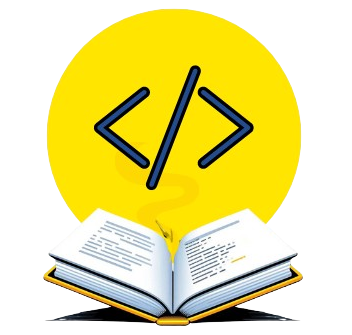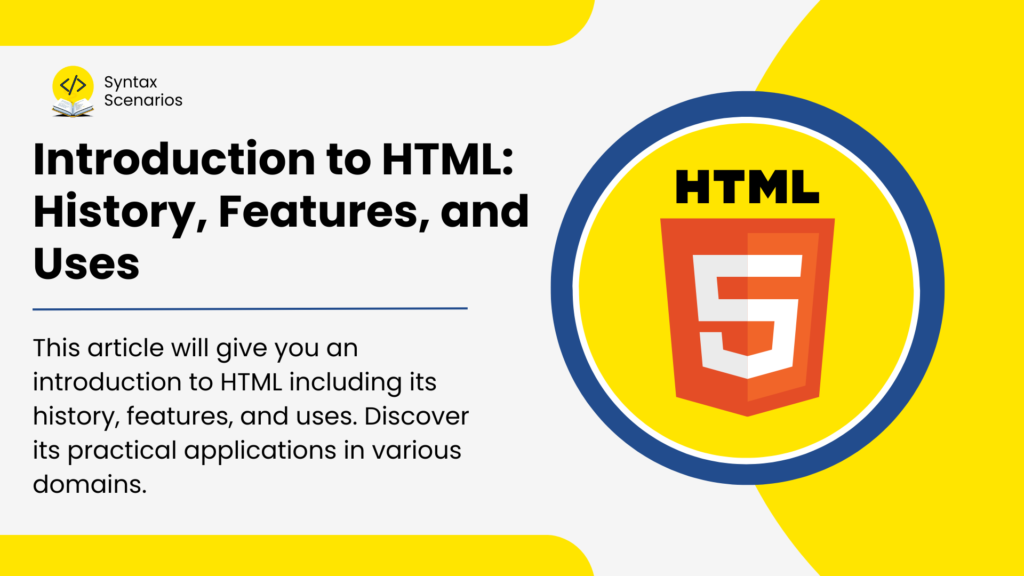This article will give you an introduction to HTML including its history, features, and uses. Discover what HTML stands for, its evolution, and its practical applications in various domains.
Table of Contents
HTML stands for HyperText Markup Language and is the basic language used to create webpages. It helps you to structure the content like text, images, and links. HTML uses special tags to tell the browser how to display each part of the webpage. Learning HTML is the first step in building or managing websites. It’s like learning the alphabet before you start writing stories. Whether you want to create a simple blog or a big online store, understanding HTML will help you get started.
History of HTML
In 1991, Tim Berners-Lee wanted to help people share information easily over the Internet. That is where HTML came into play. HTML full form is HyperText Markup Language. Remember that it is not a programming language but rather a markup language.
The Story – How HTML Got its Name?
It got the name HTML as HyperText means that it allows the creation of hyperlinks and the word Markup language was used as it allowed to use tags to mark up the structure of the elements on the website. It uses different tags to organize, and display text, images, links, and other elements on the web pages. Before HTML there was SGML (Standard Generalized Markup Language). Even though it was a powerful system it was very complex so HTML is an improved version of SGML. Since the introduction of HTML, it has evolved with new versions, adding more and more features and capabilities. HTML5 the latest version even supports multimedia, graphics, and more making it more powerful and flexible.
Features of HTML
Easy Learning Curve
HTML is designed to be easy to learn and use, even for beginners. Its syntax is straightforward and intuitive, which means you can start creating basic web pages with just a few tags and a basic understanding of how they work. This simplicity allows new programmers to quickly grasp the essentials of web development and see immediate results, making HTML an ideal starting point for anyone new to coding.
Structure and Layout
HTML provides a way to structure and layout content on the web. With HTML, you can create headings, paragraphs, lists, links, images, and more. This helps organize content so that it’s easily readable and accessible for users. Think of HTML as the skeleton of your web page, giving it shape and structure.
Hyperlinks
One of the most powerful features of HTML is the ability to create hyperlinks. Links allow users to navigate from one page to another or jump to different sections within a page. This is the foundation of the web, enabling users to browse information easily and find related content quickly.
Multimedia Support
HTML supports the inclusion of multimedia elements like images, audio, and video. This means you can enhance your web pages with visual and audio content, making them more engaging and interactive. Whether you’re adding a simple image or embedding a video, HTML makes it straightforward to incorporate multimedia.
Form Handling
HTML forms are essential for collecting user input. Whether you’re creating a simple contact form or a complex survey, HTML provides the necessary tags to create input fields, buttons, and other form elements. This makes it easy to gather information from users and process it on the server side.
Compatibility
HTML is compatible with all web browsers, which means web pages written in HTML can be viewed by anyone, regardless of the browser they are using. This universal compatibility ensures that your content is accessible to a wide audience.
Uses of HTML
Webpage Creation and Design
HTML is essential for building and designing webpages. It provides the basic structure for your content, like text, images, and links. By using HTML, you can easily organize and display information on a website. This markup language makes it simple to create attractive and functional webpages.
SEO (Search Engine Optimization)
HTML helps improve your website’s visibility on search engines. By using proper HTML tags and structures, like headings and meta descriptions, you make it easier for search engines to understand and rank your content. This way, your website can show up higher in search results, attracting more visitors.
Web Development Frameworks
HTML is essential for many web development frameworks, such as Bootstrap and Angular. These frameworks build on HTML to create responsive, dynamic, and interactive web pages more efficiently. By using HTML with these frameworks, you can design and develop modern websites quickly and effectively.
Content Management Systems (CMS)
HTML is used in Content Management Systems (CMS) like WordPress and Joomla to create and manage website content. These systems rely on HTML to structure text, images, and links, making it easy to build and update webpages without needing deep technical knowledge. Using HTML with a CMS helps you maintain a well-organized and functional website.
Email Marketing
HTML is essential for creating visually appealing and interactive email campaigns. It allows you to format text, include images, and add links, making your emails more engaging and professional. By using HTML, you can design emails that look good on different devices and help ensure your message stands out in your audience’s inbox.
Conclusion
In conclusion, HTML is a versatile and widely used markup language that’s easy to learn, making it ideal for creating websites. It works seamlessly with all modern browsers and continues to evolve, with HTML5 offering new features and simpler tags for web development. You can use common text editors like Visual Studio to write HTML and build websites quickly and efficiently. HTML’s broad compatibility and ongoing updates ensure that it remains a key tool for anyone starting in web development.

